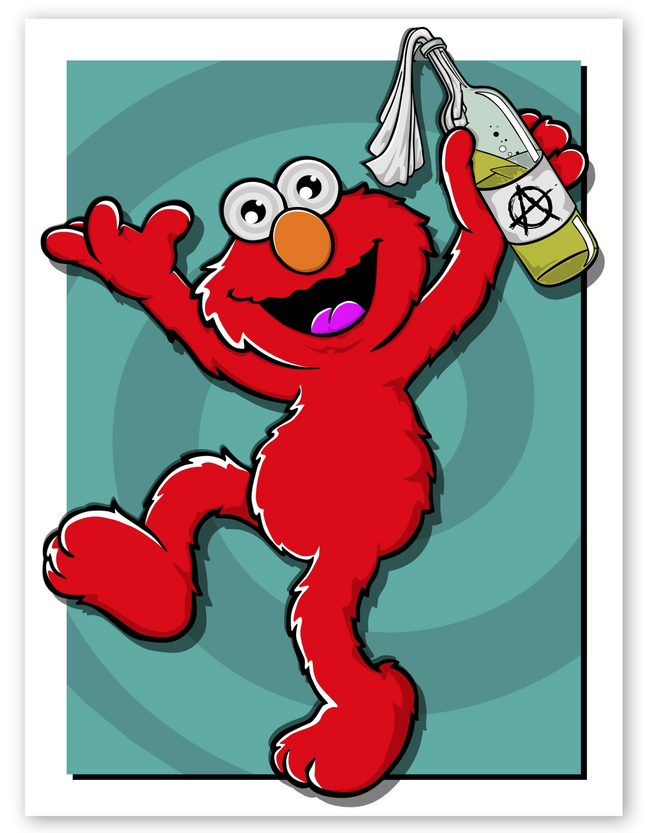
Sesame Street has emerged as an influential theme in pop art, street art, and graffiti, transcending its origins as an educational children's program to become a fixture in contemporary art. This vibrant transformation reflects not only the cultural impact of the show but also how its iconic characters have become ingrained in the collective memory across generations. Characters from Sesame Street have found new life sprayed onto city walls, repurposed through stencil art, and reimagined in gallery spaces, their images speaking to the nostalgia of youth while often carrying more profound social commentary. Street artists, in particular, have co-opted the images of Elmo, Big Bird, Oscar the Grouch, and others, embedding them into the visual language of urban landscapes. In doing so, they merge the innocence and educational purpose of the characters with the raw and expressive energy of graffiti art. This intersection creates a compelling dialogue between the playful innocence associated with Sesame Street and the often gritty realities of urban living. The artworks serve as a bridge between disparate worlds, introducing a sense of whimsy into environments sometimes perceived as harsh or unwelcoming.
These depictions are not merely aesthetic insertions. They embody the ethos of street and pop art as vessels for messaging, with Sesame Street characters being used to comment on issues ranging from social inequality to political rhetoric. This usage is an insightful counterbalance to the characters' original roles as benign educators and companions to children. The bright colors and recognizable forms catch the attention of passersby, drawing them into a deeper engagement with the underlying messages of the pieces. Pop artists, on the other hand, often take a different approach by incorporating Sesame Street into their work through techniques like appropriation and repetition, common to the pop art movement. By doing so, they elevate the status of these television characters to that of cultural icons, much like Andy Warhol did with his depictions of Marilyn Monroe or Campbell's Soup Cans. The result is a dialogue between high and low culture, questioning what constitutes art and what serves as mere entertainment. In galleries and exhibitions, Sesame Street's presence challenges traditional notions of what is considered "worthy" of artistic reinterpretation, underscoring the show's undeniably profound impact on culture.
The presence of Sesame Street in these artistic realms not only reflects its widespread recognition and appeal but also speaks to the versatility and adaptability of its characters as symbols. It also points to the complex role that television and entertainment play in our lives, from childhood into adulthood. These characters, though initially conceived for a children's program, carry layers of meaning that extend far beyond their educational intent. When placed in new contexts, such as street art or pop art, they evoke discussions about memory, nostalgia, and the societal values embedded within our shared media experiences. Sesame Street's foray into pop art, street art, and graffiti art exemplifies the dynamic and fluid nature of cultural symbols. By shifting from television screens to the streets and galleries, these beloved characters have taken on new roles as commentators and reflectors of the societies that embraced them. Through artistic reinterpretation, they continue to teach not only the alphabet or counting but also about the power of imagery and the endless possibilities for the characters that have grown alongside multiple generations.

